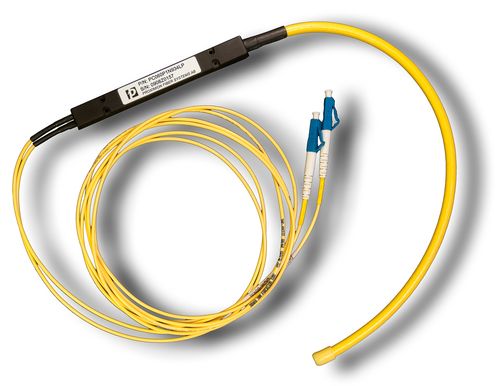Optic fiber sensors
Optical temperature sensors are temperature sensors that are based on optical technology – in most cases, on fiber optics. There are alternative techniques, in particular electronic temperature sensing. However, optical temperature sensors can offer important advantages such as:
- High-voltage isolation
- Electromagnetic and radiation immune
- Inherently intrinsically safe/ Intrinsically non-explosive
- Insensitive to lightning strikes
- Cryogenic and high temperature tolerant
- Simple, safe handling of the optical cable
- High resistance to dynamic fatigue
- Subsequent repair and mounting
- Perfect load transfer
- No corrosion or drift
- Installation of numerous sensors on the same line
Fiber Optics Temperature Measurement System:
The general structure of an optical fiber temperature measurement system is shown in the above figure 1 which consists mainly of four components that are
- the source,
- fiber optic,
- modulator (or transducer) and
- detector.
Optical source: The optical source is used to emit light and can be Laser, LED, Laser diode, or even an incandescent light.
Fiber optics: The fiber optics is used to guide the light and can be a single-mode, multimode, or doped optical fiber.
Modulator: The modulator or sometimes referred to as transducer converts the physical stimuli such as temperature or strain into an optical signal. This conversion can be of the following types:
- Intensity modulation
- Phase modulation
- Colour modulation
- Polarization modulation
Intensity modulation: The variation of the light intensity that is proportional to the perturbing environment can be detected by sensors. The concepts associated with intensity modulation include transmission, reflection, and micro bending. For this, a reflective or transmissive target can be incorporated in the fiber. Other mechanisms that can be used independently or in conjunction with the three primary concepts include absorption, scattering, fluorescence, and polarization. Intensity-modulated sensors normally require more light to function than phase-modulated sensors; as a result, they employ large-core multimode fibers or bundles of fibers.
Phase modulation: The phase of the light in a sensing fiber is compared to a reference fiber in a device known as an interferometer. These sensors employ a coherent laser light source and two single-mode fibers.The light is split and injected into the reference and sensing fibers. If the light in the sensing fiber is exposed to the perturbing environment, a phase shift occurs between them. The phase shift is detected by the interferometer. Phase modulated sensors are much more accurate than intensity-modulated sensors. The change in color is proportional to the changes in the absorption, transmission, reflection, or luminescence of the optical signal, whereas the polarization is related to the strain birefringence.
- Absorption: This type of fiber optic temperature sensor consists of a temperature sensing component being placed on the tip of the fiber optic's "free end". The other end is attached to a measuring system that collects the desired radiation and processes it into a temperature value. The sensing component can be made of liquid crystals, semiconductor materials, materials that fluoresce, and other materials that can change spectral response.
- The effects of temperature variations on a semiconducting crystal are well known and predictable.
- When the crystal's temperature increases, its transmission spectrum shifts to higher wavelengths. The relationship between the temperature and the specific wavelength at which the absorption shift takes place is very predictable.
- The position of the absorption shift is then analyzed and correlated back to temperature.
- Figure 3: Absorption modulation temperature measurement
- In Fig. 3 a white light source injects light into one of the branches of the coupler. This light travels down the probe optical fiber to the semiconducting crystal, which absorbs some of it. Unabsorbed light is reflected by the dielectric mirror and returned down the fiber to the coupler, where it is directed to a spectrometer.
- What is the absorption shift and why does it occur?
- To understand why the absorption shift occurs it is necessary to look at the variation in the semiconductor's energy bandgap.
- In solid-state physics, a bandgap also called an energy gap, is an energy range in a solid where no electronic states can exist.
- In graphs of the electronic band structure of solids, the band gap generally refers to the energy difference (in electron volts) between the top of the valence band and the bottom of the conduction band in insulators and semiconductors.
- It is the energy required to promote a valence electron bound to an atom to become a conduction electron, which is free to move within the crystal lattice and serve as a charge carrier to conduct electric current.
- Electrons are able to jump from one band to another. However, in order for an electron to jump from a valence band to a conduction band, it requires a specific minimum amount of energy for the transition. The required energy differs with different materials.
- Electrons can gain enough energy to jump to the conduction band by absorbing either a phonon (heat) or a photon (light).
- The band-gap energy of semiconductors tends to decrease with increasing temperature.
Applications:








Comments
Post a Comment